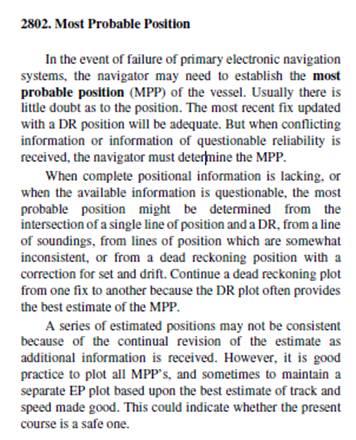
NavList:
A Community Devoted to the Preservation and Practice of Celestial Navigation and Other Methods of Traditional Wayfinding
From: Andrés Ruiz
Date: 2022 Nov 29, 10:43 +0100
The recent post on Tamaya Calculator NC 2, reminds me of the definitions of "most probable position" (MPP).
I do not like MPP definition that Tamaya or Bowditch have.
“Most probable” involve some statistical treatment of the data. MPP may be defined as that position which takes into account the probability of error in each piece of positional information available. And can be calculated using the least squares method.
The same occurs in Spanish when the term “navegación estimada” is used for sailing calculations instead of dead reckoning (DR).
Tamaya
See “Tamaya Astro-Navigation Piloting and Dead Reckoning.pdf” pages 10 & 11.
BOWDITCH 2019
CHAPTER 3
NAVIGATIONAL ERRORS
311. Most Probable Position
A more realistic concept is that of the most probable position (MPP), which recognizes the probability of error in all navigational information, and determines position by an evaluation of all available information, using the principles of errors.
CHAPTER 28
EMERGENCY NAVIGATION
See Determining the Most Probable Position | The Journal of Navigation | Cambridge Core
Fair winds.








